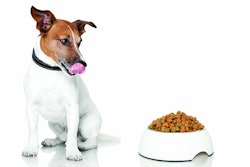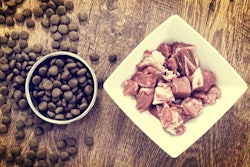
Small dogs are having their day. As millennials put off home ownership and stick with apartments or condos, and gravitate for longer periods of time to a city lifestyle that makes large pet ownership more difficult, they nevertheless continue to be determined to own pets. Baby boomers, facing empty nests and aging into the desire to downsize and/or free themselves up for travel, are likewise disinclined to live a pet-free life. The solution? Small dogs, which are more portable, more likely to meet apartment weight limits and can in some cases even be trained to be completely indoor animals, with litter or puppy pads ensuring they don’t need to go down an elevator or several flights of stairs to find relief in the nearest patch of grass.
Adapting industry trends to suit small dog breeds
Small dogs have unique health issues and nutritional needs, and the pet food industry is rising to meet those requirements as the trend gains more and more ground — even if that means going against other current trends.
“There’s an ancestral trend over the past decade or so that’s really taken off, and it totally makes sense to me,” said Jeff Fuller, vice president of marketing for Solid Gold Pet. “But if you’ve got a little four-pound dog with four teeth and a giant coat of white hair, I think some of those diets and the positioning of some of those other foods don’t really make sense and don’t land [with pet parents]. There was something about the angle we took, and the types of recipes we developed, that really resonated with the small dog pet parents.”
[solid-gold-mighty-mini-wet]
Solid Gold’s Mighty Mini line is the company’s fastest-growing brand, according to the company, and it offers both dry and wet food options for the small breed dog owner. | Courtesy of Solid Gold Pet
That doesn’t mean ignoring the high-meat trend entirely, it just means making said trend suit what the overall goal is with small dog food formulations. WellPet, for example, has launched a small breed mini meals line: single-serve packaging, a variety of flavors and formulas, catering to small dogs while combining with the high-meat positioning of WellPet’s larger CORE brand.
“They’re not carnivores,” said Dr. Danielle Bernal, BVSc, MRCVS, global director — nutrition and technical communications for WellPet. “You don’t see a chihuahua tackling out in the tundra, so that’s not the position we have. It’s more around making sure that it’s the perfect meal for a chihuahua who potentially lives in an apartment.”
[wellpet-CORE-small-breed-weight]
WellPet’s CORE line includes its small breed formulas, which include one for a significant problem small dogs face: weight control. The formula includes high fiber and optimal fat and calorie levels to support weight management in small dogs, as well as ingredients that support hip and joint health and skin and coat health.| Courtesy of WellPet LLC
Owners of small dogs seem to be responding to this approach.
"When we started to play that messaging out — your dog is not a wolf, your dog is modernized into today’s world and has needs based on how they live today, versus their ancestors — we started hearing from consumers, ‘yeah, talk to me about my dog being a dog, talk to me about the life my dog actually lives now,’” said Elaine Obergfell, marketing director for WellPet. “And that’s where we wanted to make sure the conversation was going; understanding based on the nutrition what they should be looking for and recognizing that lifestyle, especially in the small breeds.”
Proper nutrition and premiumization in small dog food formulas
There’s a misconception among some pet owners that small dogs need less fat and less protein than their larger brethren, but small dogs burn a lot of energy and need to be fed accordingly, according to Courtney Toder, e-commerce and channel marketing manager for Solid Gold.
“For us, it’s really all about the tailored nutrition for them — the optimal levels of protein and fat and calories for a small breed dog,” she said. “That’s what the Mighty Mini line (the company’s fastest-growing line, geared towards small breeds) is all about. And we pair that with omega fatty acids for skin and coat health, as well as living probiotics and prebiotics to restore optimal gut health for them. The prebiotics act as food for the probiotics so those probiotics don’t die when they get to the gut because they have nothing to eat. [Because of this balance] their gut flora really flourishes. It’s overall complete holistic health for the small breed dog.”
And of course, the premium trend towards the highest possible quality ingredients is alive and well in small dog formulas.
“Consumers are looking for real food ingredients in their pet’s food that can deliver important nutritional benefits, rather than a food made with things like poultry by-product meal or fillers,” said Rachel Kracht, assistant director of marketing for Ainsworth Pet Nutrition. “They also want a food that contains real meat as the number one ingredient, so that they can be sure their pet is getting high-quality protein in every bowl.”
Ainsworth has answered that call through Rachael Ray’s Little Bites line, part of the Nutrish brand. “The real chicken & veggies recipe has real US farm-raised chicken as the number one ingredient, which provides nutrients to help support lean muscle mass and healthy organs,” said Kracht. The recipe has the right balance of fats and carbohydrates, which help support higher energy levels in small dogs. There are other carefully selected ingredients like peas, brown rice and carrots which provide fiber to help support healthy digestion, and cranberries which help support a small dog’s immune health.”
[ainsworth-rachael-ray-little-bites]
Rachael Ray’s Nutrish Little Bites real chicken & veggie recipe highlights the needs of small breed dogs: small, crunchy kibble that helps support clean teeth and healthy gums; US farm-raised chicken for lean muscle mass and healthy organs; and a balance of fats and carbohydrates which help support higher energy levels in small dogs. | Courtesy of Ainsworth Pet Nutrition
The future of small breed dog food: customer outlook and expanding options
When it comes to the trend of small dogs in pet ownership, those in the pet food industry who are keeping track say that there’s still a lot of room for growth. And that growth will be seen in multiple avenues, from pet owners’ outlooks to evolving food trends and the need for expanding options.
“In some research we did last year, 30 to 50 percent of consumers are already using kibble as a base [for their pets’ meals] but topping with other dog products (versus their own human foods),” said Obergfell. “We’re seeing this growth being pushed forward by small breed dog parents; they’re tapping into this earlier than we’re seeing with medium or large breed dogs.” Small dog owners, according to Obergfell, put down meals for their pets and if they see the dog really isn’t excited about their dinner, the owner feels like they haven’t given their dog the best that they possibly could. “And small breed dogs are absolutely folded in as a family member,” she said. “You don’t want to let them down. But we heard very clearly from pet parents that ‘I just want to do better by my dog.’”
Overall?
“We expect the small/toy breed population to grow,” said Kracht. “And with it, small/toy breed-specific food and treats will continue to increase, and to follow the trends of other dog food diets, which are closely mirroring human food trends. Whether it be high protein ancestral diets, raw food diets or vegan diets, when manufacturers bring new products to market they will continue to include small breed-specific products in their product lines.”
Small dogs, big personalities: Engaging small dog owners

















